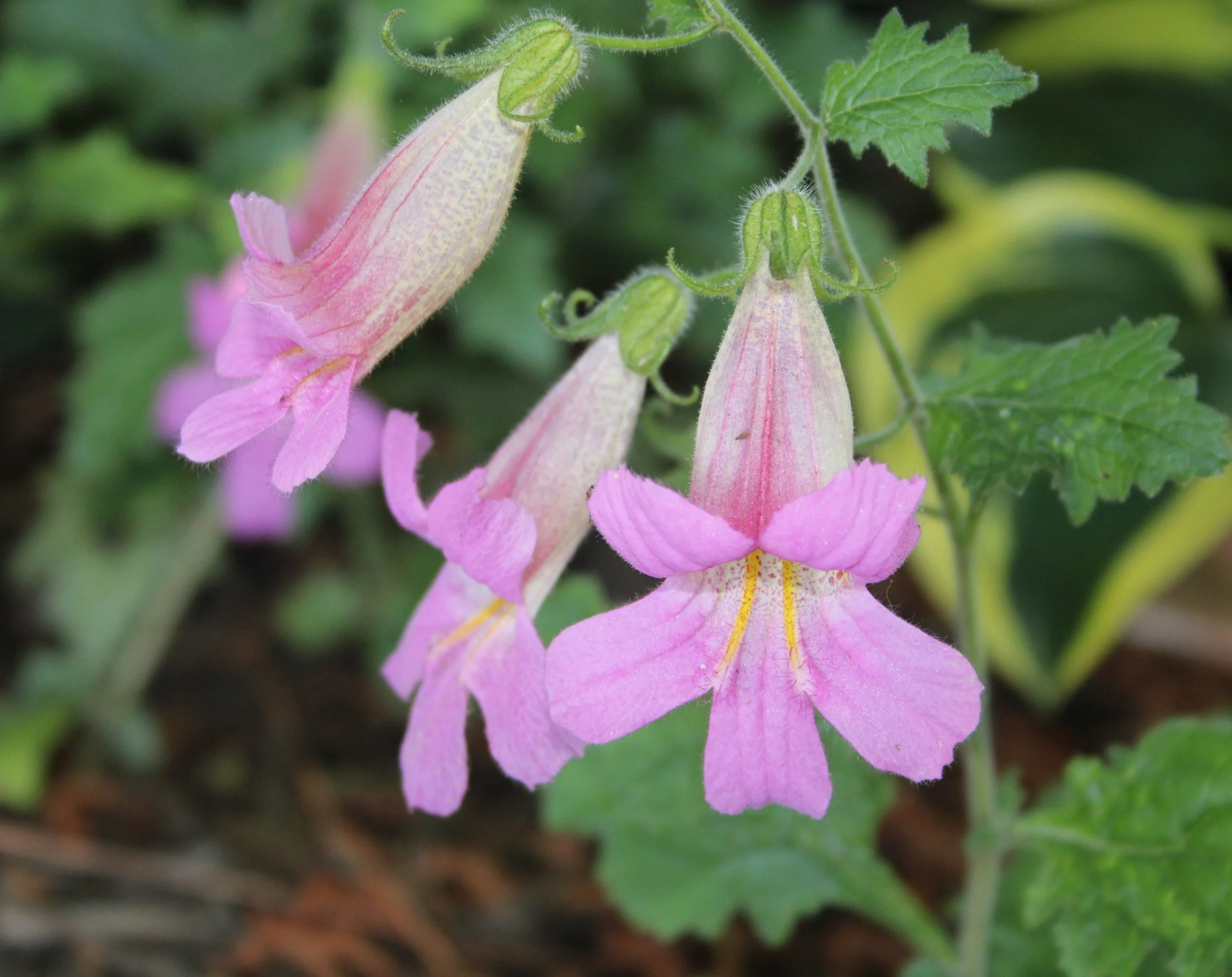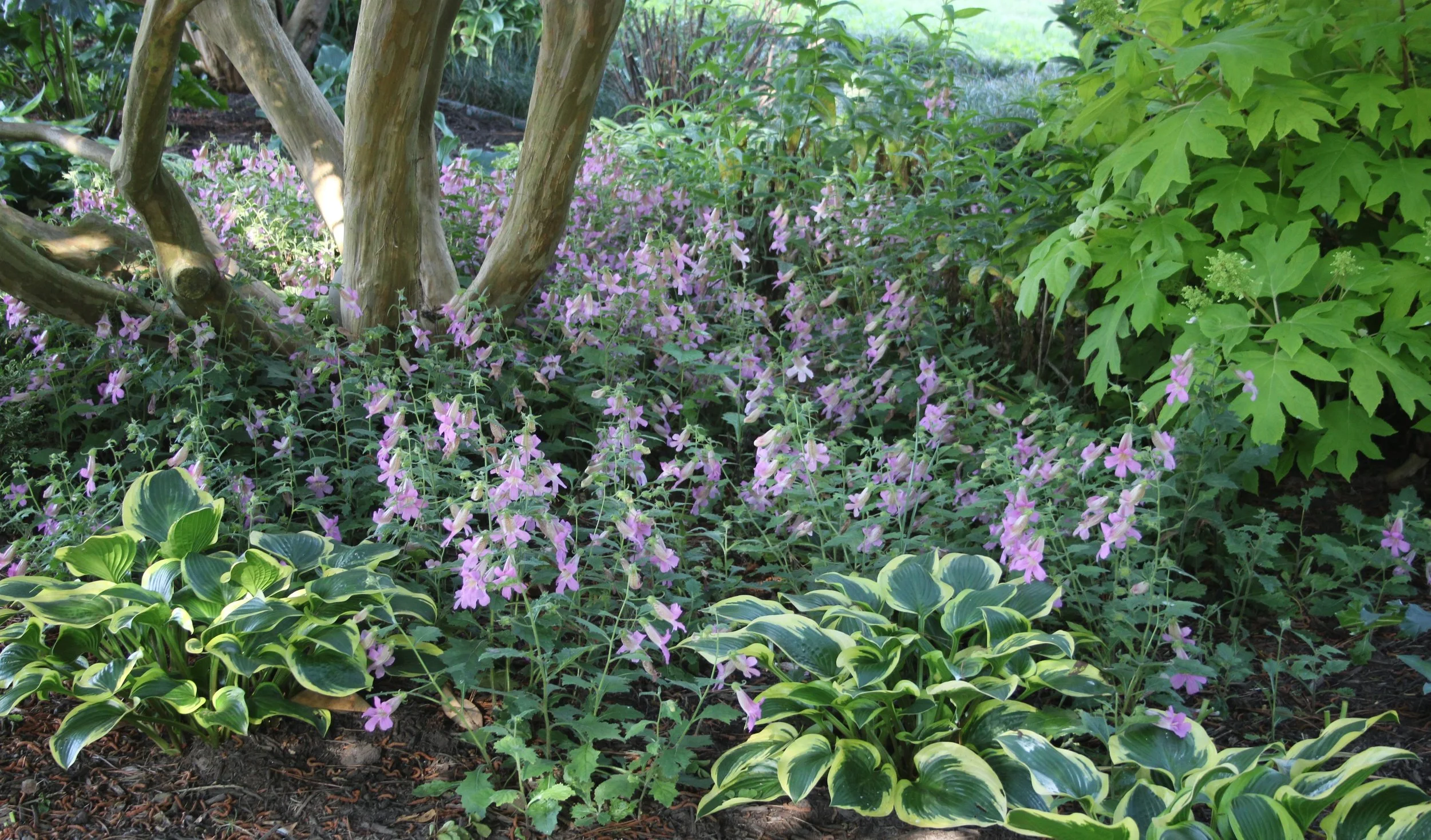Spring means “garden tour time” here in South Carolina. I enjoy garden tours and attend as many as possible because (a) I enjoy seeing the way other people have conquered garden challenges and (b) I discover exciting new plants.
Several years ago, I encountered a plant I had never seen before. The homeowner/tour host told me it was a Chinese Foxglove, Rehemannia eleta. The beautiful tubular blooms made a pink cloud in the dry shade under a tree. The voice that lives in my head said, “Must.Have.That.Plant!”
I scoured all local nurseries, trying to find this beauty for sale. When that failed, I turned to the internet. I did not find plants, but I did find seeds for sale, at a company located in Ontario, Canada. Fast-forward a couple of weeks, and I held the precious envelope, ready to start my own pink cloud. When I opened the seed envelope, there was a smaller, waxy envelope inside. And inside this envelope there was – nothing. I telephoned the seed seller, which was a bit frustrating. I do not speak French; they did not speak Southern. When I was transferred to someone who understood my problem, I was told that there was, in fact, seeds inside the inner envelope. They were the size of dust particles. I hung up and found my trusty jeweler’s loupe, one of the handiest items ever created.
Yes, there were minute seeds, visible with 10x magnification. I had never started anything so small, so I took special precautions. I used a very fine seed-starting mix, soaked it completely, and packed it lightly into plastic 4-cell packs. I tore a paper coffee filter into tiny scraps. then used tweezers dip each filter piece into water. I touched a corner of the damp filter to the seeds, one at a time. The seeds adhered nicely to the damp filter. I laid each filter piece and its attached seed on top of the seed starting mix, one per cell. In just a few weeks, I had tiny plants and large self-congratulation. (This technique works well for any tiny seeds.)
Since then, the Chinese Foxgloves in the Mary Snoddy garden have reseeded into large, handsome clumps. (I guess Mother Nature did not need tweezers and a coffee filter.) They have a travel plan of their own design, and crop up in other places in the same shady bed. I assume that their seeds are wind-distributed.
Chinese Foxgloves thrive in the same soil, moisture and light exposure as Hostas. Despite the common name, they are not true Foxgloves (Digitalis). The tubular blooms have a bit of flare to the petals. They are cold-hardy In Zones 7-11. If deadheaded, they will bloom for months. I choose to skip the removal of old blooms, and still enjoy four to six weeks of flowering.

